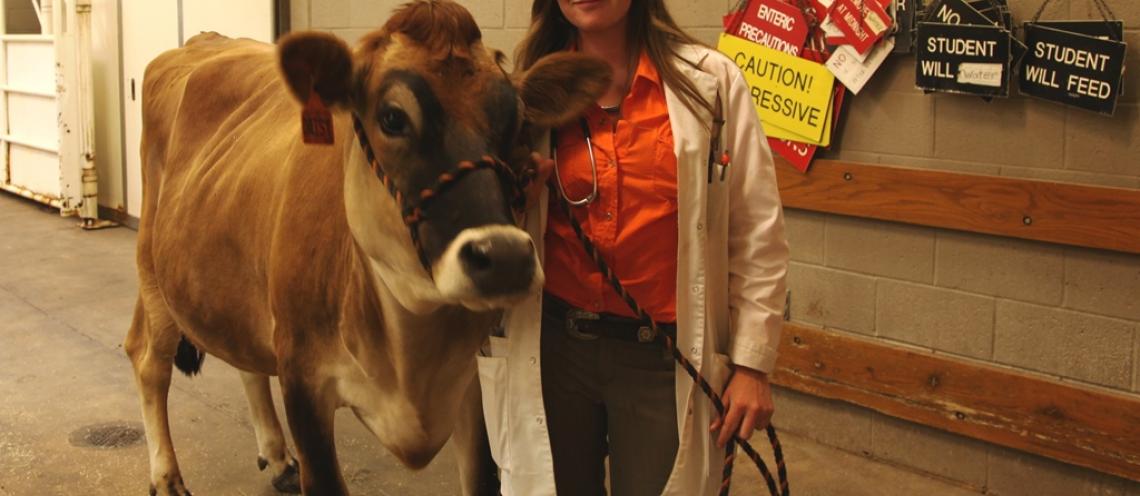
Veterinary Viewpoints: Daisy the donor
Friday, July 17, 2015
On July 15, 2015, America celebrated National Cow Appreciation Day. Although there are many cows to be thankful for, the staff, faculty and students of Oklahoma State University Center for Veterinary Health Services would like to call special attention to its resident ruminal fluid donor Daisy. Daisy is more than just a 3-year-old Jersey cow, she is a hero.
On a regular basis, Daisy saves the lives of ruminants such as cows, goats, sheep and llamas by donating something called “ruminal fluid.”
Ruminal fluid comes from the largest of a cow’s four stomach compartments, the rumen. In the rumen, the starches and fibrous grasses that cows eat are broken down by bacteria and protozoa to simpler substances that the cow can use for energy.
Humans, dogs, cats and pigs do not have rumens and, therefore, they must eat foods that contain more simple starches and proteins that their stomachs can breakdown for their bodies to use.
When a cow or other ruminant gets sick and doesn’t eat, the good microorganisms that allow them to digest grass often die and the cow can no longer utilize the food it eats as energy. Without any energy, the cow cannot get better. That is where Daisy comes in.
It is this bovine bravado’s job to donate her ruminal fluid, a natural probiotic, to those in need of some good microorganisms.
One year ago, Daisy had a procedure performed called a "rumen cannulation." In this procedure, a cannula, a rubber tube-like device, was placed into her rumen. The cannula extends directly from one side of her skin into her rumen, and similar to an earring in a pierced ear, Daisy’s skin healed around it.
The cannula has a "plug" that can be easily removed for access to her rumen contents. This allows veterinarians to easily collect small amounts of fluid from Daisy’s rumen without causing her any harm or discomfort.
With her bacteria, protozoa and fluid in such high demand, Daisy has been given a place to live at the OSU Veterinary Medical Hospital. She came to OSU when she was donated to the veterinary center in January 2014.
Before she could join OSU’s life-saving team, she had to pass a health test and was extensively screened for blood borne diseases and behavioral issues. Once she passed, she began her life of ruminant rescue and repose. Since then, Daisy has saved countless lives, having donated ruminal fluid to other animals in need well over 500 times.
When this courageous cow isn’t saving lives, she’s out in the paddock practicing her soccer ball kicking skills, taking a stroll, or resting comfortably in the corner of her stall chewing her cud, with her languid brown eyes half closed, as the busy students at the Veterinary Medical Hospital whirl by.
The hardest part of Daisy’s job is the hours it takes to slowly munch delicious grass hay to feed her microorganisms. She bravely tolerates this task and enjoys being loved by all the students. She is an important asset of OSU and greatly appreciated.
by Darcy Messerly, class of 2016
Veterinary Viewpoints is provided by the faculty of the OSU Veterinary Medical Hospital. Certified by the American Animal Hospital Association, the hospital is open to the public providing routine and specialized care for all species and 24-hour emergency care, 365 days a year.
